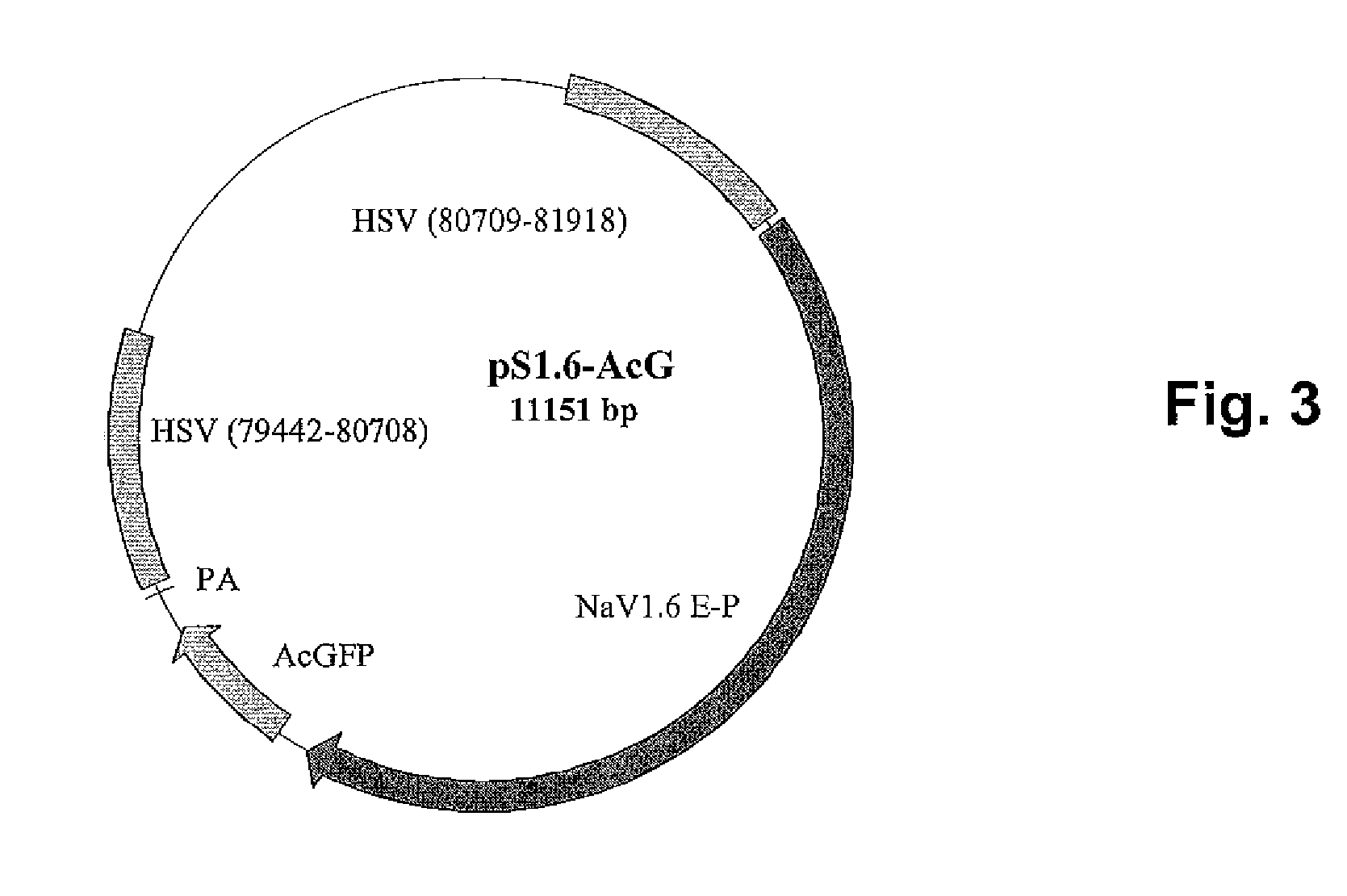Expression of Anti-Nociceptive Compounds from Endogenously Regulated Promoters
- Summary
- Abstract
- Description
- Claims
- Application Information
AI Technical Summary
Benefits of technology
Problems solved by technology
Method used
Image
Examples
example 1
[0083]A herpes simplex virus shuttle plasmid (HSV-1) (FIG. 1) was formed that contains 1) the mouse 4.6-kilobase galanin enhancer-promoter, 2) the woodchuck hepatitis virus post-translational regulatory element (WPRE), 3) a polyadenylation sequence (PA), 4) restriction sites for cloning cDNAs to be expressed (Sal I, Pme I) and 5) flanking sequence from HSV targeting the expression cassette to the region between the HSV-1 UL36 and UL37 genes.
[0084]Into this shuttle plasmid was inserted either the cDNA for the rat mu opioid receptor (MOR) or one of several marker genes including enhanced green fluorescent protein (EGFP), mCherry (red fluorescent protein) or lacZ β-galactosidase). These shuttle plasmids were linearized and separately transfected with HSV-1 DNA. The viral DNA was isolated from a recombinant HSV-1, designated PZ, which contains a cassette, interrupting the viral thymidine kinase gene, that expresses the marker gene for β-galactosidase under control of the constitutive en...
example 2
[0091]A second HSV-1 shuttle plasmid (FIG. 3) was formed that contained 1) the mouse 4.8-kilobase NaV1.6 (Scn8a) enhancer-promoter, 2) a gene encoding the green fluorescent protein AcGFP, 3) the woodchuck hepatitis virus post-translational regulatory element (WPRE), 4) a polyadenylation sequence (PA) and 5) flanking sequence from HSV targeting the expression cassette to the region between the HSV-1 UL36 and UL37 genes. This shuttle plasmid with viral DNA from the wild-type, KOS, strain of HSV-1 was used to generate a recombinant virus, named S1.6AcG. The recombinant was purified by limiting dilution.
PUM
| Property | Measurement | Unit |
|---|---|---|
| Nucleic acid sequence | aaaaa | aaaaa |
Abstract
Description
Claims
Application Information
 Login to view more
Login to view more - R&D Engineer
- R&D Manager
- IP Professional
- Industry Leading Data Capabilities
- Powerful AI technology
- Patent DNA Extraction
Browse by: Latest US Patents, China's latest patents, Technical Efficacy Thesaurus, Application Domain, Technology Topic.
© 2024 PatSnap. All rights reserved.Legal|Privacy policy|Modern Slavery Act Transparency Statement|Sitemap


